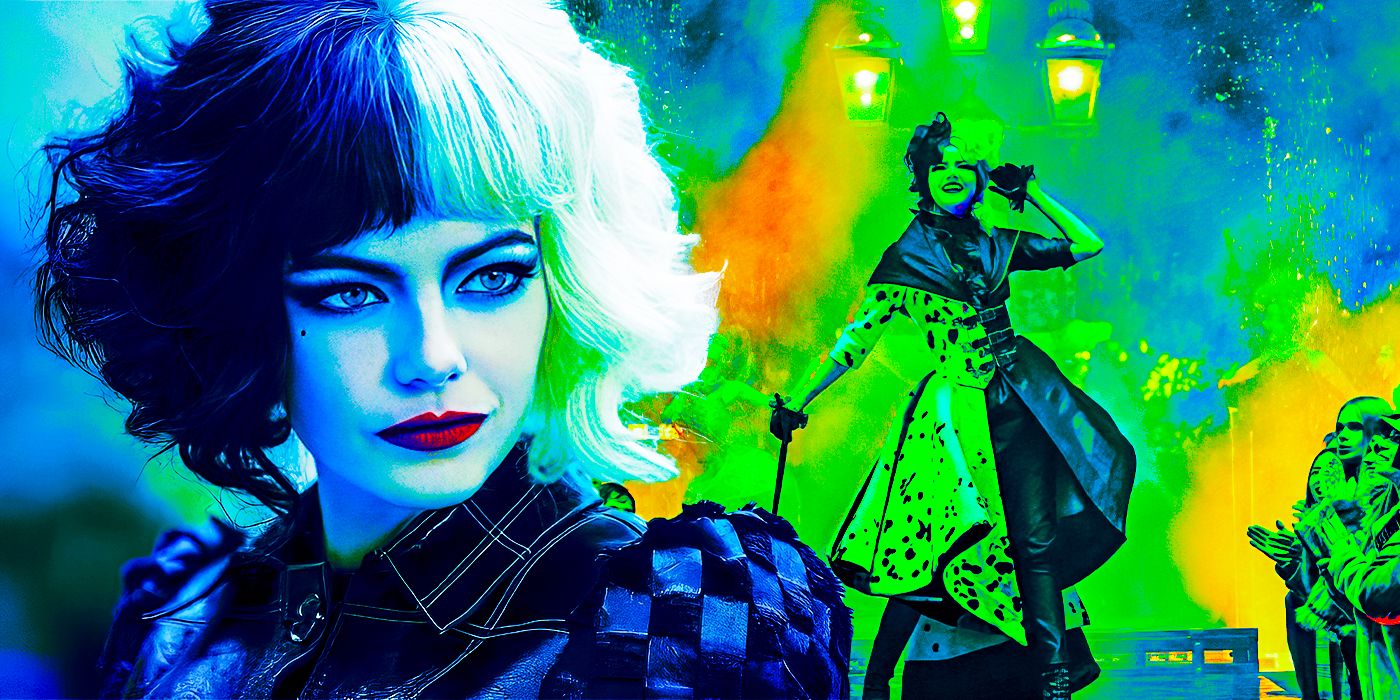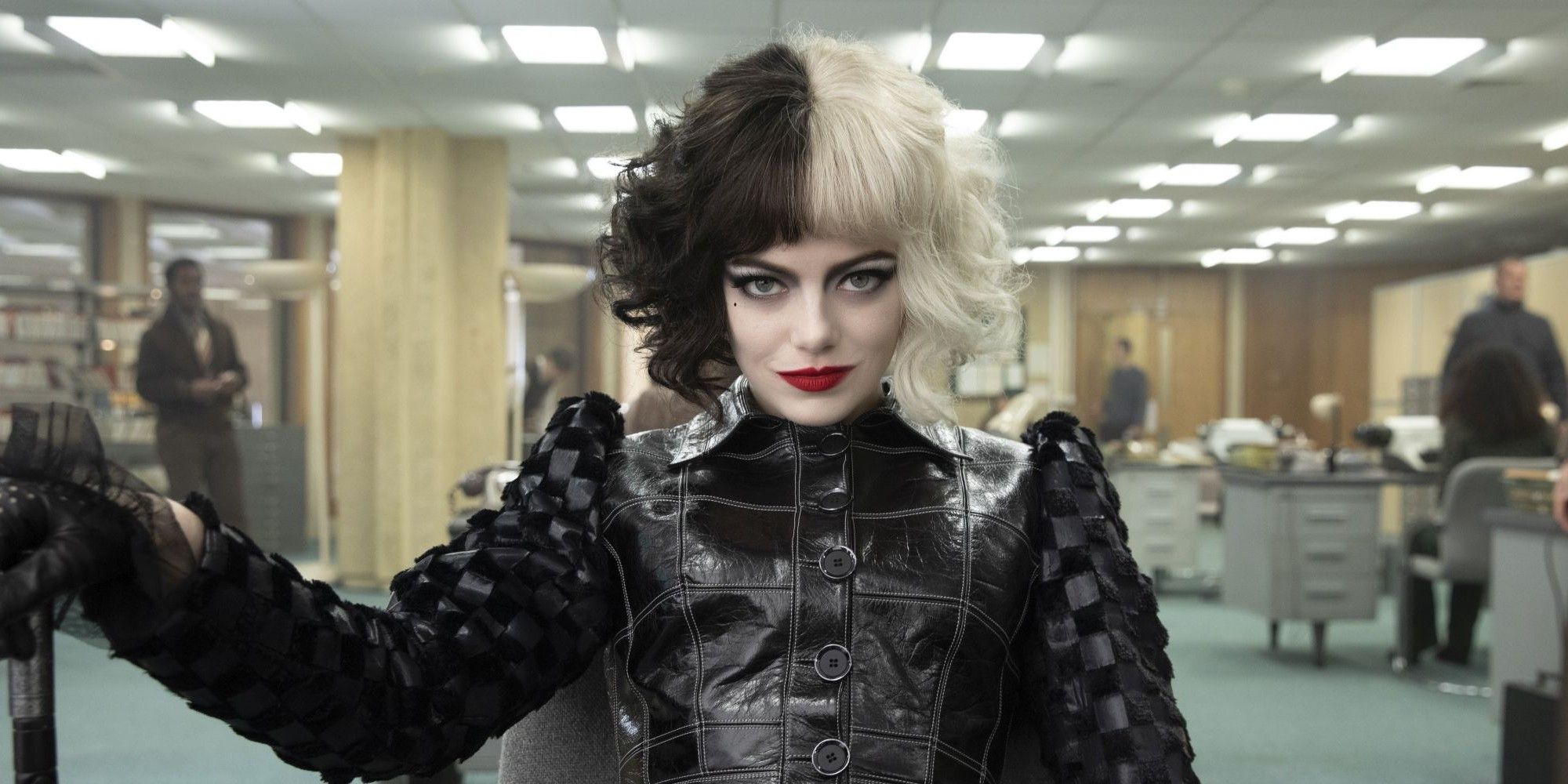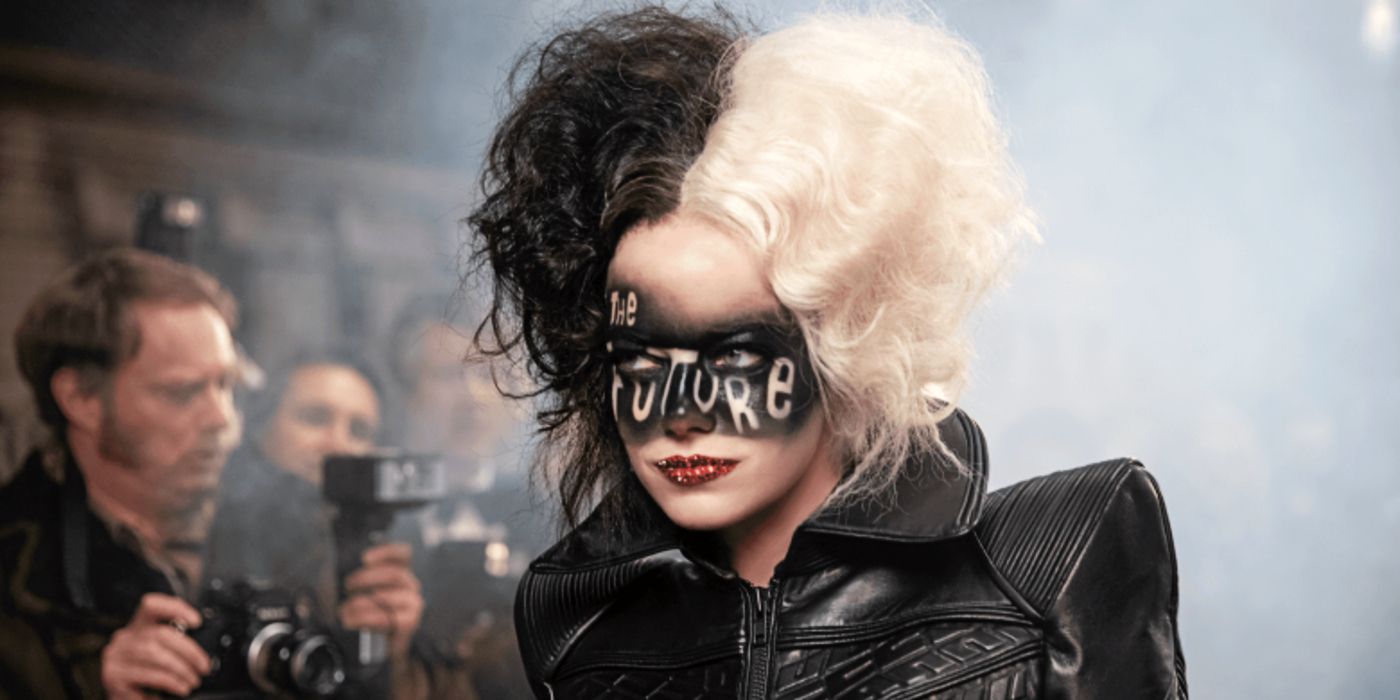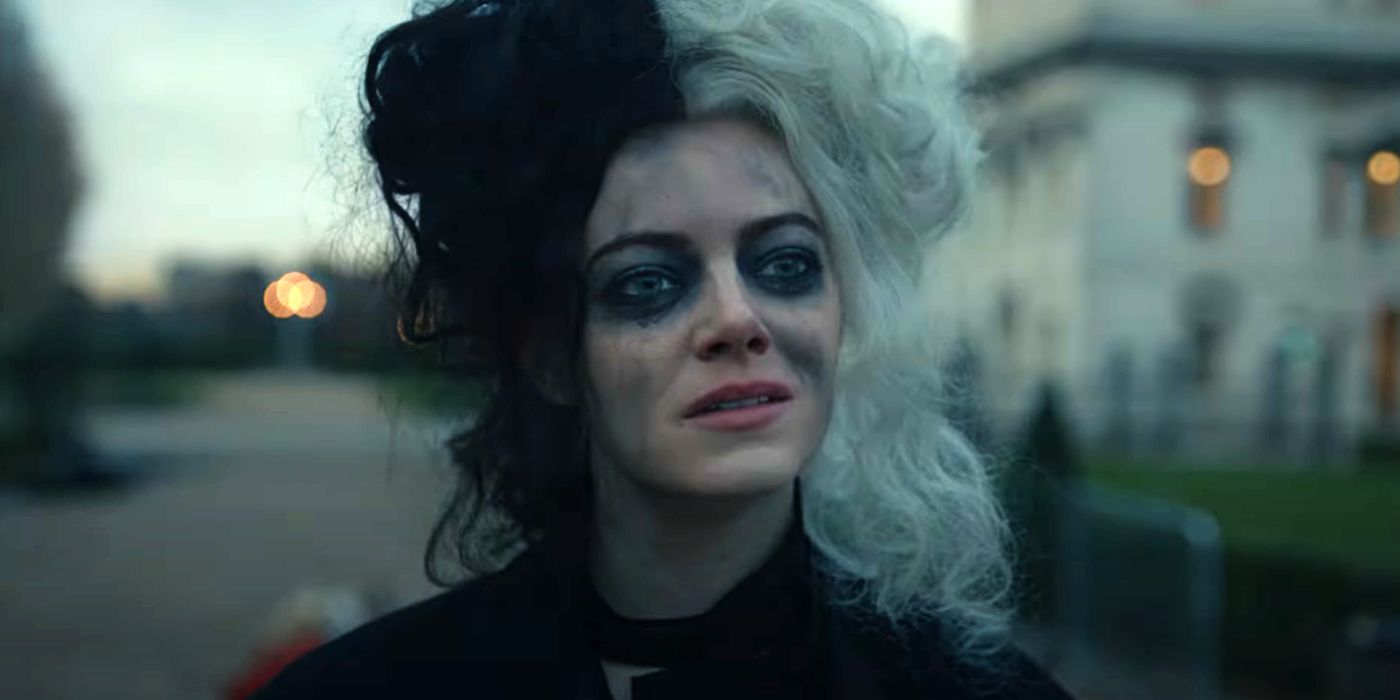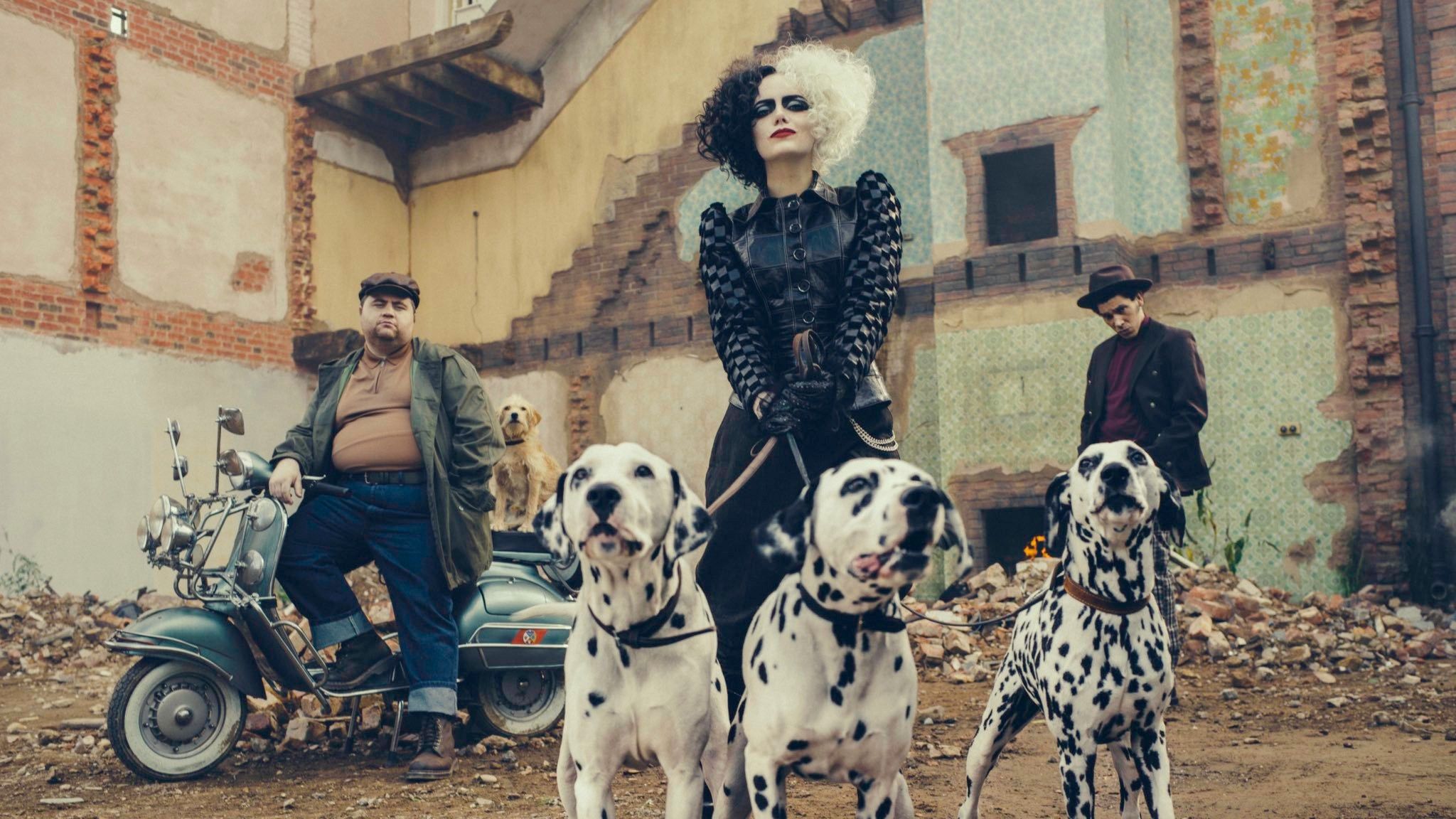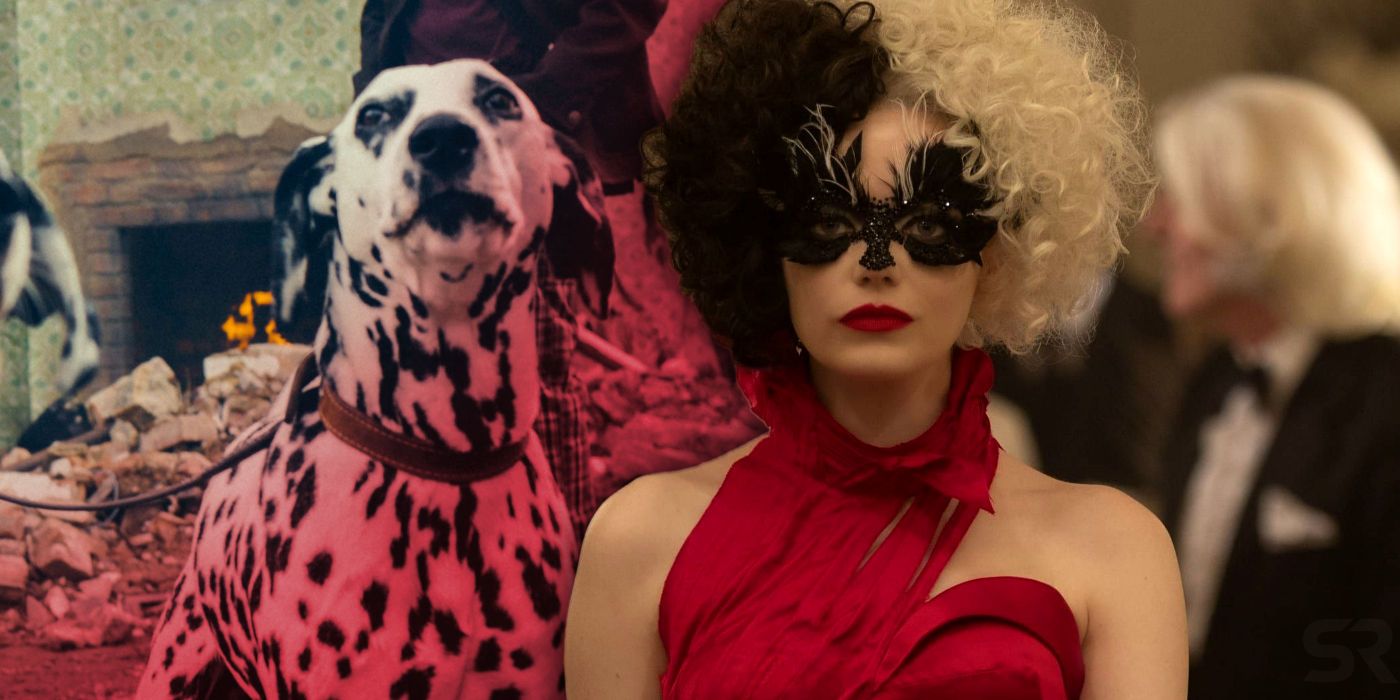Summary
- Disney's Cruella delves into the origin story of the traditionally flamboyant villain, providing depth and nuance to her character.
- Estella's transformation into Cruella involves embracing her darker alter-ego and challenging the fashion world with her explosive creative talent.
- The ending sets up a potential future release of Cruella 2, while leaving open the question of whether Cruella will repeat her mother's mistakes or find her own path.
Disney's Cruella ends with the death of an alter-ego, justice being served, and the possibility of a new beginning. Directed by Craig Gillespie, Cruella stars Emma Stone in the titular role and delves deep into the traditionally flamboyant villain’s origin story right from the moment she was born. Unfolding in the form of a bildungsroman, Cruella etches a thrilling trajectory for its primary character, building out her motivations while investing depth and nuance. This meant a retroactive shift in the way we see the villain from Disney's animated 101 Dalmations, setting up a potential reimagining of this story in the future.
Cruella details the life of Estella (Stone), a rebellious child who dreams of being a successful fashion designer someday. Estella’s mother, Cathrine (Emily Beecham), does her best to imbue Estella with a sense of kindness while tenderly asking her to “fit in” so as to avoid the pain of ostracization in society. Estella is acutely aware of the warring selves within her, the other being the reckless, rebellious “Cruella”, as lovingly dubbed by Catherine. Unfortunately, tragedy strikes, and Cruella becomes an orphan. What ensues is a struggle for survival, an awakening of self, and an ending that could imply a future release of Cruella 2.
Estella’s Transformation Into Cruella & The Death of Innocence
Right from a formative age, Estella is acutely aware of two alter-egos within her, which are visually represented by her beautiful, naturally black and white hair. While traditional symbolism would posit this as a war between good and evil, such a two-dimensional, binary understanding of the world only serves to limit character growth. While Cruella acknowledges the existence of stark, grey areas and the fact that the two identities often intermingle and overlap, this metaphor is consciously used to mirror visual symbolism, such as that of Dalmatian fur.
Due to Catherine’s influence and the tender friendship of Jasper and Horace, Estella is able to keep Cruella at bay, which is a conscious choice through and through. However, on learning that the Baroness is responsible for her mother’s death, something snaps within Estella, which leads her to slowly embrace her darker alter-ego: Cruella. This begins as a negative change, but the classic 101 Dalmations character's journey to find balance is the true center of this story.
Choosing to go head-to-head with the Baroness while working for her as Estella, Cruella is able to challenge the Baroness publicly and ensure that the fashion world is reckoned with her explosive creative talent. These little victories come at a major price - Cruella’s nature intrinsically carries a steak of meanness, which renders her incapable of treating those around her with tenderness or respect. This manifests in the form of her strained relationship with Jasper and Horace, who are treated as hired henchmen instead of team members deserving of respect.
The thirst for vengeance pushes Cruella over the edge of personal control, which momentarily leads to the death of innocence and vulnerability. Hardened by the cruelties life had thrown her way, Cruella treats everyone with the same cold, calculating disdain. However, she soon realizes the error of her ways and finds a way to publicly “kill” Estella at the hands of the Baroness, which proves to be a necessity that aids her plan to return to the world as Cruella. Despite killing off the alternate identity that stands for gentle kindness, Cruella seems to have embraced a grey area, never quite edging into the trope of the “villain."
Why Cruella Uses Punk Rock As A Means of Identity & Artistic Expression
While the punk subculture embraces a wide range of ideologies and forms of expression, the movement, especially at its peak, took a blatant anti-establishment stance with an emphasis on individual identity. This works well with the themes embedded within Cruella, wherein the titular character is able to embrace a hidden facet of herself via creative expression and become the face of a bold, unbridled rebellion of ideas within the fashion world.
While the subgenre’s DIY ethics work seamlessly with Estella/Cruella’s passion as a designer, the beliefs of anti-consumerism do seem to conflict with what the fashion industry stands for. This might paint Cruella’s actions in a somewhat shallow light, but it is important to acknowledge that she, in her own way, challenges the authoritarian hold that the Baroness has over trends and aesthetics, which includes redefining the meaning of not being a “sell-out.” Needless to say, punk aesthetics, be it the costumes, lighting, or music, works in favor of the film incredibly, as it serves to heighten the dramatic campiness of the narrative as a whole.
How Cruella Weaves Loss, Revenge, & Mental Health In A Sympathetic Origin Story
Cruella de Vil has always been an iconic villainess, primarily being a glamorous London heiress with a penchant for fashioning fur coats out of Dalmatians. Cruella’s machinations have always canonically stemmed from a vendetta against Dalmatians and a certain nonchalance to the fate of animals, as long as it served her needs to appear striking in society. While this can and should be termed evil, Cruella decides to completely uproot what defines its titular character and etch a sympathetic anti-hero narrative instead.
When Estella decides to embrace the darker facet of her identity, she completely immerses herself in the role and carries out certain questionable acts in order to execute her plan. However, she never goes far enough to alienate audiences, prime examples being the fact that she seems completely disinterested in killing the Dalmatians for fur coats in Cruella, along with when she realizes that her friends do not deserve Cruella’s cold, indifferent behavior.
After the big reveal of Cruella being the Baroness’ daughter, the weight of the truth crushes Cruella. Apart from feeling othered in a way unimaginable, the fact that her mother wished to be rid of her newborn child opens a wound that is deemed unhealable. This is especially traumatic for Cruella, as her initial motivation of avenging her mother is tinged with a fresh layer of pain and loss. While acknowledging that she almost lost herself, Cruella vows to embrace who she is without sacrificing her best selves, she is prepared to take what is rightfully hers.
What Cruella’s Future Looks Like - A Possible Setup For 101 Dalmatians
Cruella’s mid-credits scene is an interesting setup for a possible sequel, namely the setup for the widely-loved 101 Dalmatians. Having inherited the Baroness’ fortune as Cruella de Vil and renaming the estate as Hell Hall, Cruella is last seen setting the scene for her own fashion brand and expanding her impact on the fashion world. Cruella's post-credits scene features Roger (Kayvan Novak), the Baroness’ former lawyer, who now seems to be pursuing a full-time career as a pianist. The scene cuts to Anita Darling (Kirby Howell-Baptiste), Cruella’s childhood friend and now-turned gossip journalist who helps promote her new persona in the movie.
Both Roger and Anita receive puppies from Cruella, Dalmatians named Pongo and Perdit, respectively. This perfectly aligns with the arc in both versions of 101 Dalmatians, wherein Roger and Anita fall in love, and their dogs give birth to an unnaturally large litter of 15 puppies. Incidentally, these are the same puppies that Cruella tries to bring together with 86 others to fashion a winter coat. When viewed through this particular lens, the otherwise heartwarming scene harbors a somewhat sinister undertone, as it appears that Cruella herself plays a seminal role in orchestrating this scenario.
As Disney spends most of the movie trying to position Cruella as a rebellious figure with her heart in the right place instead of an outright villain, it proves antithetical to set up a premise wherein she becomes an animal killer for the sake of making a fashion statement. As this sentiment does not quite align with Cruella’s development as a character so far, it is unclear as to which direction her tale would develop. Needless to say, a certain darkness lingers within Cruella, one that can manifest at any point due to personal tragedy or being driven too far by blind ambition.
What The Ending of Cruella Really Means
Cruella ends with the Baroness being proven guilty of Estella’s murder and being taken to jail for her crimes. While the Baroness is exposed in the eyes of the public, she is shown to hold a considerable amount of influence due to her social stature. Will the Baroness truly be brought to justice, or will she find a way to escape the legal system and enact her plan to take down Cruella?
Apart from this, there is also the question of Cruella’s own motivations and what exactly she envisions for herself, along with the price she is willing to pay for the same. Is she going to be trapped in the same toxic patterns and repeat the mistakes of her mother? This is a difficult question to answer, as it is unclear whether she genuinely finds solace in the company of those loyal to her or whether she secretly views them as a means to an end. While Cruella's titular character is posited as inherently good, dark embers often creep within the edges of her wide, kohl-smudged eyes, which could very well be an inking that marks the beginning of the end.

